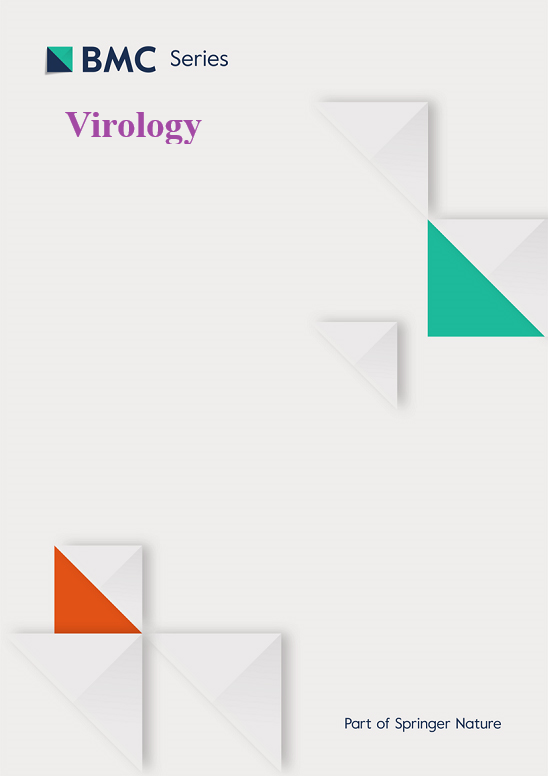抗干扰素I型病毒蛋白的起源和功能
IF 2.8
3区 医学
Q3 VIROLOGY
引用次数: 0
摘要
I型干扰素(IFN-I)是脊椎动物宿主细胞在病毒感染后产生的最重要的先天免疫细胞因子。从广义上讲,通过模式识别受体(PRR)检测感染病毒的核酸及其随后的下游信号传导可触发大量ifn - i刺激基因(ISGs)的合成,这些基因具有多种抗病毒效应功能。数百万年来,病毒与宿主相互作用的共同进化导致了病毒策略的出现,这些策略可以靶向和抑制宿主prr介导的检测、信号转导途径和ifn - i介导的isg刺激。在这篇综述中,我们阐述了病毒免疫逃避的多种机制,并通过总结最近文献中的关键例子讨论了抗ifn - i病毒蛋白的共同进化。由于描述了大量的抗ifn - i蛋白,我们在这里对来自不同病毒家族的突出例子进行了评估。了解病毒逃避策略的不断演变将提供有关这些不断演变的相互作用的机制细节,但将进一步加强量身定制的抗病毒方法的发展。本文章由计算机程序翻译,如有差异,请以英文原文为准。

Origin and function of anti-interferon type I viral proteins
Type I interferons (IFN-I) are the most important innate immune cytokines produced by vertebrate host cells following, virus infection. Broadly speaking, detection of infecting viral nucleic acids by pattern recognition receptors (PRR) and subsequent downstream signaling triggers synthesis of a large number of IFN-I-stimulated genes (ISGs), endowed with diverse antiviral effector function. The co-evolution of virus-host interactions over million years has resulted in the emergence of viral strategies that target and inhibit host PRR-mediated detection, signal transduction pathways and IFN-I-mediated stimulation of ISGs. In this review, we illustrate the multiple mechanisms of viral immune evasion and discuss the co-evolution of anti-IFN-I viral proteins by summarizing key examples from recent literature. Due to the large number of anti-IFN-I proteins described, we provide here an evaluation of the prominent examples from different virus families. Understanding the unrelenting evolution of viral evasion strategies will provide mechanistic detail concerning these evolving interactions but will further enhance the development of tailored antiviral approaches.
求助全文
通过发布文献求助,成功后即可免费获取论文全文。
去求助
来源期刊

Virology
医学-病毒学
CiteScore
6.00
自引率
0.00%
发文量
157
审稿时长
50 days
期刊介绍:
Launched in 1955, Virology is a broad and inclusive journal that welcomes submissions on all aspects of virology including plant, animal, microbial and human viruses. The journal publishes basic research as well as pre-clinical and clinical studies of vaccines, anti-viral drugs and their development, anti-viral therapies, and computational studies of virus infections. Any submission that is of broad interest to the community of virologists/vaccinologists and reporting scientifically accurate and valuable research will be considered for publication, including negative findings and multidisciplinary work.Virology is open to reviews, research manuscripts, short communication, registered reports as well as follow-up manuscripts.
 求助内容:
求助内容: 应助结果提醒方式:
应助结果提醒方式:


